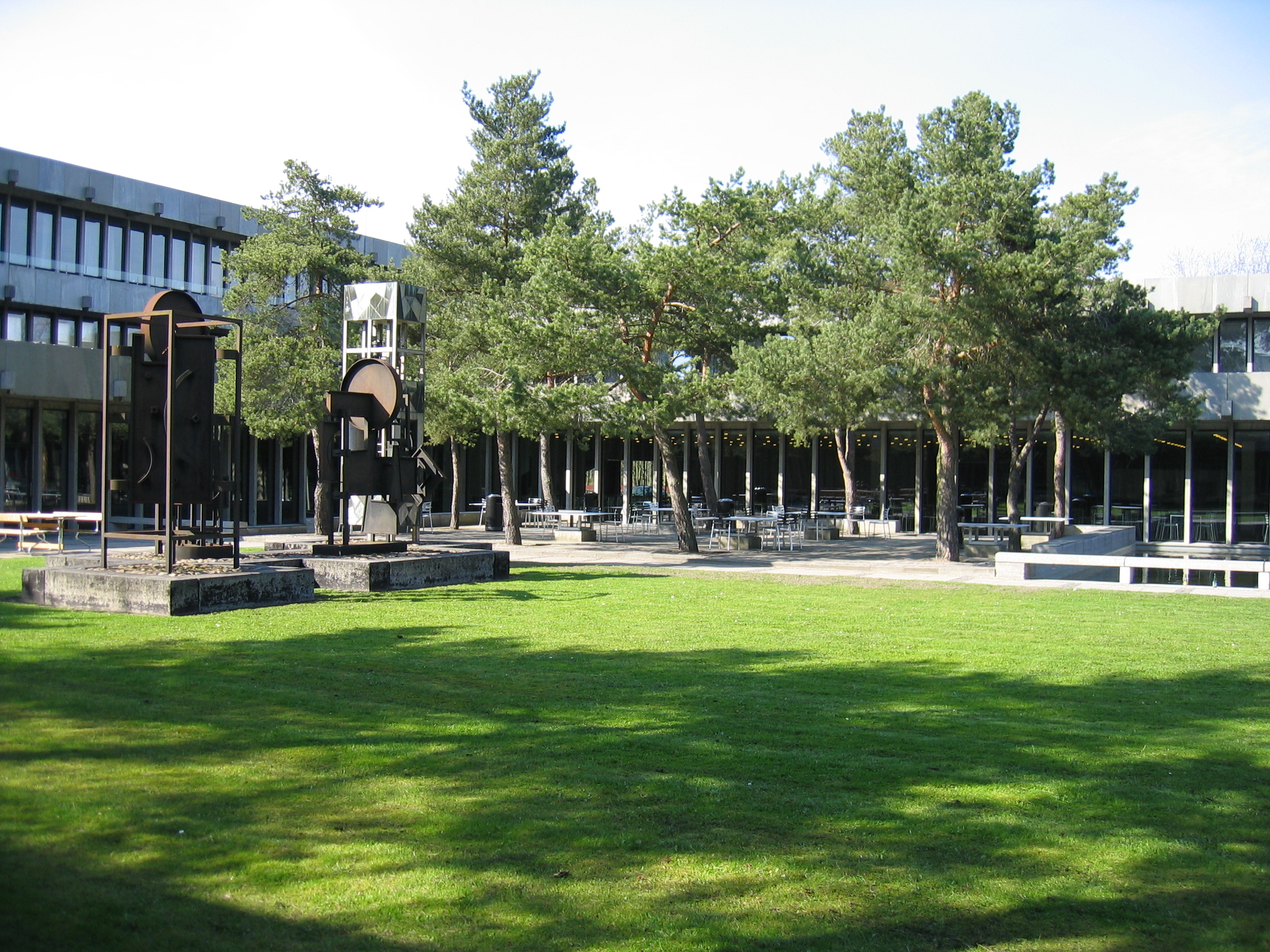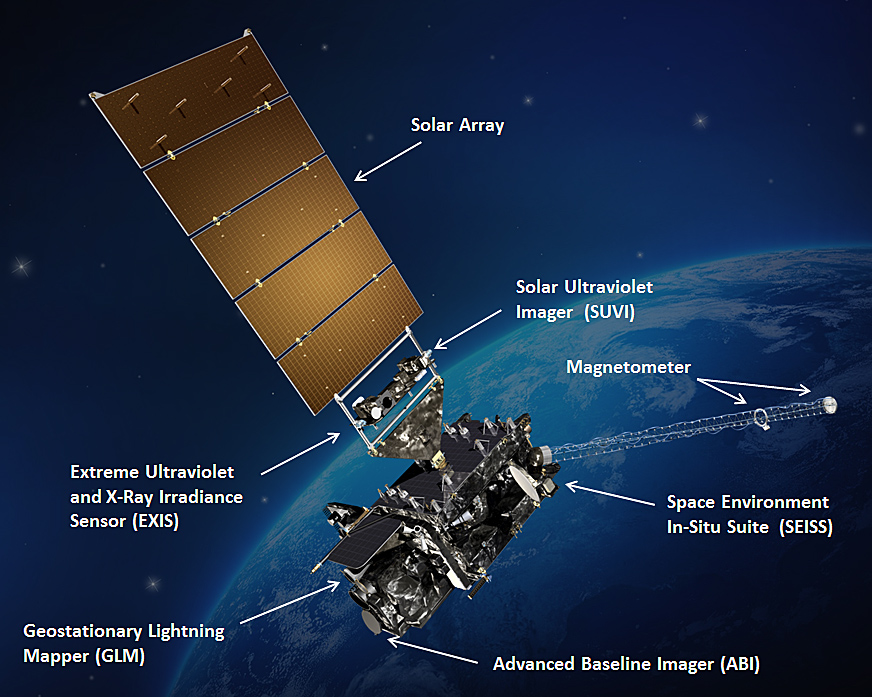|
Atmosphere-Space Interactions Monitor
Atmosphere-Space Interactions Monitor (ASIM) is a project led by the European Space Agency to place cameras and X-ray/ γ-ray detectors on the International Space Station to observe the upper atmosphere in order to study sprites, jets and elves and terrestrial gamma-ray flashes in connection with thunderstorms. It is hoped that measurements of these phenomena from space will contribute to the understanding of Earth's upper atmosphere. The ASIM components, originally planned to be completed in 2014, were launched on 2 April 2018 and mounted on the ''Columbus'' External Payload Facility on 13 April 2018. Danish tech company Terma A/S is running the technical part of the project for ESA and DTU Space (''National Space Institute'') from the Technical University of Denmark provides the scientific leadership of the project. Mission operations will be performed by the Belgian User Support and Operations Centre (B.USOC) in Uccle, Belgium. Some results from the measurements were publi ... [...More Info...] [...Related Items...] OR: [Wikipedia] [Google] [Baidu] |
Technical University Of Denmark
The Technical University of Denmark ( da, Danmarks Tekniske Universitet), often simply referred to as DTU, is a polytechnic university and school of engineering. It was founded in 1829 at the initiative of Hans Christian Ørsted as Denmark's first polytechnic, and it is today ranked among Europe's leading engineering institutions. It is located in the town Kongens Lyngby, north of central Copenhagen, Denmark. Along with École Polytechnique in Paris, École Polytechnique Fédérale de Lausanne, Eindhoven University of Technology, Technical University of Munich and Technion – Israel Institute of Technology, DTU is a member of EuroTech Universities Alliance. History DTU was founded in 1829 as the "College of Advanced Technology" (Danish: Den Polytekniske Læreanstalt). The Physicist Hans Christian Ørsted, at that time a professor at the University of Copenhagen, was one of the driving forces behind this initiative. He was inspired by the École Polytechnique in Paris, Fran ... [...More Info...] [...Related Items...] OR: [Wikipedia] [Google] [Baidu] |
Satellite Meteorology
A weather satellite or meteorological satellite is a type of Earth observation satellite that is primarily used to monitor the weather and climate of the Earth. Satellites can be polar orbiting (covering the entire Earth asynchronously), or geostationary (hovering over the same spot on the equator). While primarily used to detect the development and movement of storm systems and other cloud patterns, meteorological satellites can also detect other phenomena such as city lights, fires, effects of pollution, auroras, sand and dust storms, snow cover, ice mapping, boundaries of ocean currents, and energy flows. Other types of environmental information are collected using weather satellites. Weather satellite images helped in monitoring the volcanic ash cloud from Mount St. Helens and activity from other volcanoes such as Mount Etna. Smoke from fires in the western United States such as Colorado and Utah have also been monitored. El Niño and its effects on weather are monitored da ... [...More Info...] [...Related Items...] OR: [Wikipedia] [Google] [Baidu] |
International Space Station Experiments
International is an adjective (also used as a noun) meaning "between nations". International may also refer to: Music Albums * ''International'' (Kevin Michael album), 2011 * ''International'' (New Order album), 2002 * ''International'' (The Three Degrees album), 1975 *''International'', 2018 album by L'Algérino Songs * The Internationale, the left-wing anthem * "International" (Chase & Status song), 2014 * "International", by Adventures in Stereo from ''Monomania'', 2000 * "International", by Brass Construction from ''Renegades'', 1984 * "International", by Thomas Leer from ''The Scale of Ten'', 1985 * "International", by Kevin Michael from ''International'' (Kevin Michael album), 2011 * "International", by McGuinness Flint from ''McGuinness Flint'', 1970 * "International", by Orchestral Manoeuvres in the Dark from '' Dazzle Ships'', 1983 * "International (Serious)", by Estelle from '' All of Me'', 2012 Politics * Political international, any transnational organization of ... [...More Info...] [...Related Items...] OR: [Wikipedia] [Google] [Baidu] |
Spacecraft Instruments
A spacecraft is a vehicle or machine designed to fly in outer space. A type of artificial satellite, spacecraft are used for a variety of purposes, including communications, Earth observation, meteorology, navigation, space colonization, planetary exploration, and transportation of humans and cargo. All spacecraft except single-stage-to-orbit vehicles cannot get into space on their own, and require a launch vehicle (carrier rocket). On a sub-orbital spaceflight, a space vehicle enters space and then returns to the surface without having gained sufficient energy or velocity to make a full Earth orbit. For orbital spaceflights, spacecraft enter closed orbits around the Earth or around other celestial bodies. Spacecraft used for human spaceflight carry people on board as crew or passengers from start or on orbit ( space stations) only, whereas those used for robotic space missions operate either autonomously or telerobotically. Robotic spacecraft used to support scientific ... [...More Info...] [...Related Items...] OR: [Wikipedia] [Google] [Baidu] |
Spacecraft Atmosphere Monitor
The Spacecraft Atmosphere Monitor (S.A.M.) is a highly compact gas chromatograph mass spectrometer ( GCMS) instrument built by JPL that is a technology demonstration on the International Space Station for monitoring the cabin atmosphere in human spacecraft. S.A.M. measures both the major constituents (e.g. nitrogen, oxygen, and carbon dioxide) and trace parts per billion volatile chemicals (e.g. benzene, ethanol, siloxanes)in the spacecraft cabin atmosphere to ensure the help safeguard the health of the astronauts. S.A.M. has a total mass of 9.5 kg and uses 40W (nominal) during operation. S.A.M. is an advanced technology demonstration that can be employed on future crewed flight missions, like in the Artemis program and the Orion spacecraft. It was launched to ISS on a Dragon spacecraft on July 25, 2019, and began continuous operations on July 29, 2019. S.A.M. was returned to earth aboard SpaceX-25 on Jan. 24, 2022 after almost two years of continuous operations aboard the I ... [...More Info...] [...Related Items...] OR: [Wikipedia] [Google] [Baidu] |
Scientific Research On The International Space Station
The International Space Station is a platform for scientific research that requires one or more of the unusual conditions present in low Earth orbit (for example microgravity, ( cosmic) -radiation and extreme temperatures). The primary fields of research include human research, space medicine, life sciences, physical sciences, astronomy and meteorology. The 2005 NASA Authorization Act designated the American segment of the International Space Station as a national laboratory with the goal of increasing the use of the ISS by other federal agencies and the private sector. Research on the ISS improves knowledge about the effects of long-term space exposure on the human body. Subjects currently under study include muscle atrophy, bone loss, and fluid shift. The data will be used to determine whether space colonization and lengthy human spaceflight are feasible. As of 2006, data on bone loss and muscular atrophy suggest that there would be a significant risk of fractures and movem ... [...More Info...] [...Related Items...] OR: [Wikipedia] [Google] [Baidu] |
European Contribution To The International Space Station
The European contribution to the International Space Station comes from 10 members of the European Space Agency (ESA) and amounts to an 8% share in the programme. It consists of a number of modules (primarily the ''Columbus'' laboratory) in the US Orbital Segment, ATV supply ships, launchers, software and €8 billion. History In the 1980s, ESA devised plans for its own space station called ''Columbus'' Man-Tended Free Flyer which could be attached to NASA's Space Station ''Freedom''. America objected to ESA's using ''Columbus'' as a building block of a future European space station, and were concerned that they would facilitate the creation of a potential competitor if the crewed space outpost fulfilled its promise as supplier of commercially viable products, such as new materials and pharmaceuticals. Plans were scaled down as a result, and by 1988, Europe proposed to participate with three elements: Attached Pressurized Module, Man Tended Free-Flying platform, plus an u ... [...More Info...] [...Related Items...] OR: [Wikipedia] [Google] [Baidu] |
Columbus (ISS Module)
''Columbus'' is a science laboratory that is part of the International Space Station (ISS) and is the largest single contribution to the ISS made by the European Space Agency (ESA). Like the '' Harmony'' and ''Tranquility'' modules, the ''Columbus'' laboratory was constructed in Turin, Italy by Thales Alenia Space. The functional equipment and software of the lab was designed by EADS in Bremen, Germany. It was also integrated in Bremen before being flown to the Kennedy Space Center (KSC) in Florida in an Airbus Beluga. It was launched aboard on February 7, 2008, on flight STS-122. It is designed for ten years of operation. The module is controlled by the Columbus Control Centre, located at the German Space Operations Center, part of the German Aerospace Center in Oberpfaffenhofen near Munich, Germany. The European Space Agency has spent €1.4 billion (about US$2 billion) on building ''Columbus'', including the experiments it carries and the ground control infrastructure n ... [...More Info...] [...Related Items...] OR: [Wikipedia] [Google] [Baidu] |
Uccle
Uccle () or Ukkel () is one of the 19 municipalities of the Brussels-Capital Region, Belgium. In common with all of Brussels' municipalities, it is legally bilingual (French–Dutch). It is generally considered an affluent area of the city and is particularly noted for its community of French immigrants. History According to legend, Uccle's church of St. Peter was dedicated by Pope Leo III in the year 803, with Charlemagne and Gerbald, Bishop of Liège, attending the ceremony. During the following centuries, several noble families built their manors and took residency there. The first mention of the name ''Woluesdal'', now evolved into ''Wolvendael'', dates from 1209. In 1467, Isabella of Portugal, wife of Philip the Good, Duke of Burgundy, founded a Franciscan convent on Uccle's territory. Later, Uccle became the judiciary capital of the area including Brussels. Throughout the early stages of its history, however, the village of Uccle always had a predominantly rural chara ... [...More Info...] [...Related Items...] OR: [Wikipedia] [Google] [Baidu] |
Belgian Institute For Space Aeronomy
The Royal Belgian Institute for Space Aeronomy (BIRA-IASB) ( nl, Koninklijk Belgisch Instituut voor Ruimte-Aeronomie - BIRA, french: Institut royal d'aéronomie spatiale de Belgique - IASB) is a Belgian federal scientific research institute. Created in 1964, its main tasks are research and public service in space aeronomy, which is the physics and chemistry of the atmosphere of the Earth and other planets, and of outer space. The scientists rely on ground-based, balloon-, air- or space-borne instruments and computer models. History On 25 November 1964 the Aeronomical Service is separated from the Royal Meteorological Institute (RMI) and lives on as a scientific institution of the state with the name: Belgian Institute for Space Aeronomy (BIRA-IASB). In 2014, BIRA-IASB celebrates its 50th anniversary and gains its royal statute. On this occasion, the Institute gathere50 important events in its history The institute has as main competence, tasks of public service and research in th ... [...More Info...] [...Related Items...] OR: [Wikipedia] [Google] [Baidu] |
DTU Space
The National Space Institute at the Technical University of Denmark, also known as DTU Space ( da, Institut for Rumforskning og Rumteknologi), is a Danish sector research institute and a part of the Technical University of Denmark. It has a staff of 169, including researchers, engineers, and technicians. The institute conducts research in astrophysics, Solar System physics, geodesy, and space technology. To conduct the research, the Institute collaborates with the Niels Bohr Institute for Astronomy, Geophysics and Physics. It came about as a result of combining the Danish Space Research Institute with the geodesy part of the National Survey and Cadastre of Denmark on 1 January 2005 to form the Danish National Space Center (DNSC). In 2007, the DNSC merged with the Technical University of Denmark, and in 2008 changed its name to DTU Space. The institute currently leads Swarm, a project to investigate the properties of the earth's magnetic field. See also * List of government spa ... [...More Info...] [...Related Items...] OR: [Wikipedia] [Google] [Baidu] |







